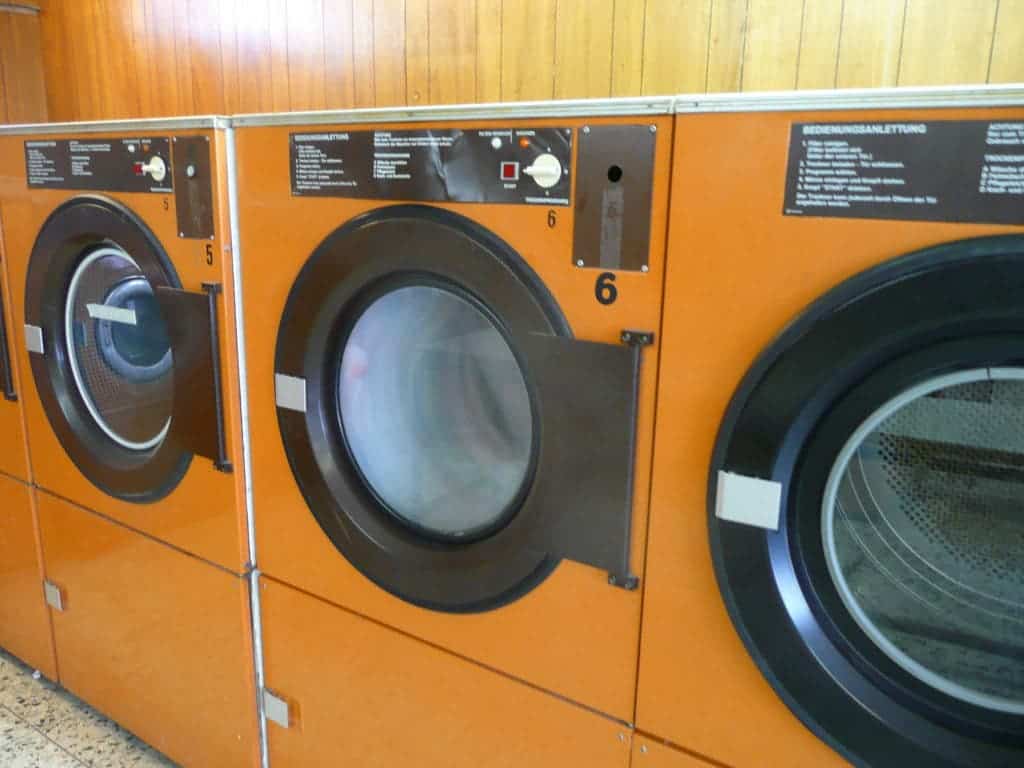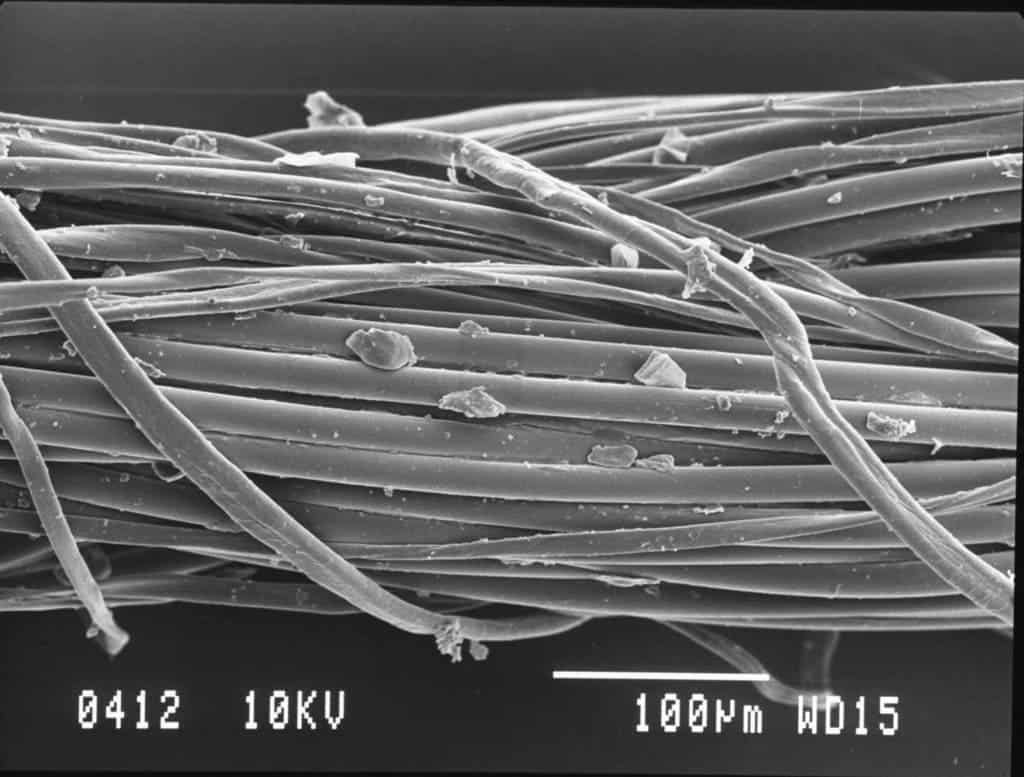It’s one of the worst feelings: you take your clothes out of the dryer and they no longer fit. There’s a distinctive interaction between certain clothing and the dryer which results in shrinkage — not all clothes shrink, and not all materials shrink. Let’s examine why and how this happens.

Cotton, water, and heat
Cotton isn’t the only material which can shrink in the dryer (wool also shrinks big time), but it’s a good example. Cotton is made from cellulose, an organic compound consisting of long chains of several hundred to many thousands of units. From a molecular perspective, cellulose (and cotton) is hydrophilic – it loves water. If you’ve ever been in the rain while wearing cotton, you can appreciate what this means: the clothes absorb a lot of water and take a long time to dry. Ironically, this is why we use the dryer in the first place.
When the clothes are washed, they soak up a lot of water, swelling up. Then, under the heat of the dryer, they dry and shrink to their normal size. However, as they continue to dry, they start curling up, which makes them smaller than they originally were. The water molecules also act as a lubricant between the cellulose molecules, easing the way they get close to each other. This effect is strongest for fibers which absorb water very well, such as cotton, linen, and wool. Some manufacturers will add a layer of protection against this, but that’s another story.

Contrary to popular belief, this isn’t the end of the story. It’s not just heat which does the trick — it’s also the tumbling. The tumbling causes fibers to constrict, shrinking the clothes. To make things worse, this also decreases the life of the fabric. So at the end of the day, a combination of heat and tumbling can have devastating results for your clothes.
How to prevent clothes from shrinking in the dryer
Of course, the simplest way to avoid shrinking your clothes in the dryer is not using a dryer. Drying them outside on a string is often preferable – but that’s not always an option. If you must use a dryer, then there are a few things you can do.

For starters, don’t buy clothes that shrink. Try to purchase clothes that are either synthetic or pre-treated. Many manufacturers add protective layers to cotton, linen, and wool clothes. This might add a bit extra to the price tag, but it can definitely be worth it. You can also try to find pre-washed (think: pre-shrunk) clothes. This means that the pressure in the material has already been released and they won’t shrink again.
There are also a few things you can tinker around with in terms of the washing and drying. For starters, try using cold water when washing. Using warm water instead of cold will cause extra shrinking — so try using cold water instead. Then, when drying, tinker around with your settings. Make sure both the heat and the tumbling are set down to their lowest setting. This might take a little longer to dry but it also reduces the risk of shrinkage. This is likely labeled as the ‘eco’ or ‘green’ option. If your dryer offers the possibility, you can also try drying without any heat at all, just through tumbling.
So, there you have it. There’s a scientific reason why clothes shrink in the dryer, and there are a few things you can do to avoid it. If you want to avoid your clothes getting smaller with each wash, you now know what to do.
Was this helpful?



